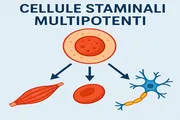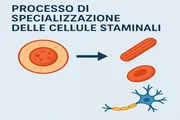Stem cells are a topic that often surfaces in scientific discussions, yet their complexity demands a deeper understanding. Among the various types, multipotent stem cells stand out due to their specialized yet limited differentiation potential. Let’s explore what these cells are and why they matter.
Multipotent stem cells have the unique ability to replicate into a group of related, specialized cells. For instance, hematopoietic stem cells are a form of multipotent stem cell capable of generating all the necessary blood cells required for bone marrow function. However, their application is restricted: they cannot produce cells for entirely different tissues like the brain.
More Than 200 Cell Types in the Human Body
The human body hosts around 200 distinct cell types, each performing a specific task—be it muscle contraction, light signal processing, or immune defense. These highly specialized cells originate from stem cells during development and continue to be replenished throughout life. Multipotent stem cells are crucial in this biological architecture because they serve as reservoirs for replacing damaged or aged cells within their designated lineage.
The Cycle of Life and Replacement
Cells do not last forever. Depending on their location and function, they undergo natural degradation and must be replaced. Blood cells, for example, have short lifespans and are constantly renewed. This ongoing cycle is largely regulated by multipotent stem cells, especially in tissues like bone marrow. Their ability to divide and differentiate into needed blood components makes them essential for maintaining equilibrium within the circulatory system.
Interestingly, the rate of cell turnover varies across the body. The lining of the gut or skin replaces cells at an accelerated pace due to constant exposure to external stimuli. In contrast, some internal organs regenerate cells far more slowly.
Cells With Slow Turnover
Not all cells regenerate at the same rate. While red blood cells are replaced rapidly, others like neurons or cardiac muscle cells are replaced far less frequently. This is one reason why damage to certain organs is so hard to repair. Multipotent stem cells, in this context, provide limited solutions, as they can only replenish specific lineages rather than repair cross-functional damage.
Specialized Cells and Their Limits
Once a cell becomes specialized, it typically loses the ability to divide. This makes the initial supply and regeneration of cells a delicate balance orchestrated by stem cells. Maintaining this balance is vital for tissue health and function. It also explains why stem cells are actively studied in regenerative medicine, as their behavior could one day be manipulated to aid in treating diseases or injuries where regeneration is poor or absent.
Understanding Stem Cells
Each organ and tissue in the body contains a unique set of stem cells. Though different in behavior, all stem cells share one defining trait: when they divide, one daughter cell remains a stem cell, while the other begins the journey toward specialization. This dual outcome ensures both self-renewal and contribution to tissue regeneration. Multipotent stem cells are particularly important in adult organisms where they act as the body's internal repair system.
Totipotent and Pluripotent Stem Cells
Totipotent and pluripotent stem cells are rarer and more versatile. Found only in early-stage embryos, they can develop into virtually any cell type. Though naturally short-lived, these cells can be grown in vitro, aiding research into cellular differentiation and regenerative therapies. By comparing their capabilities with those of multipotent stem cells, researchers better understand the spectrum of cellular potential and how to manipulate it for clinical applications.
Artificial Stem Cells
In 2006, a breakthrough allowed scientists to reprogram adult skin cells into pluripotent stem cells by inserting four specific genes. These induced pluripotent stem cells (iPSCs) behave similarly to embryonic cells and can differentiate into most body cell types. Moreover, if derived from a patient, they minimize the risk of immune rejection after transplantation. This discovery opened new avenues in regenerative medicine, especially for conditions where suitable donor tissue is unavailable.
Risks of Genetic Manipulation
Despite their promise, iPSCs carry risks. The inserted genes could reactivate and become pathogenic. Current research focuses on safer gene-editing techniques to avoid these potential complications. Scientists are exploring methods to introduce reprogramming factors without leaving behind genetic material that might cause malignancies or immune responses.
Back to Multipotent Stem Cells
To fully appreciate the significance of multipotent stem cells, we must understand the broader landscape of stem cell science. Recent advancements have even shown that it is possible to convert one adult cell type into another without reverting it to an embryonic stage, using targeted gene combinations. This process, known as transdifferentiation, may one day enable direct tissue repair without intermediate stem-like stages.
Benefits and Dangers of Reprogramming
Reprogramming techniques that induce continuous pluripotency can potentially increase tumor risk. Scientists now aim to optimize reprogramming for efficiency while avoiding uncontrolled cell proliferation. Balancing innovation with safety is key. Multipotent stem cells, because of their restricted potential, carry a much lower risk of such transformations, making them safer for many medical applications.
Final Thoughts
Have we found the key to curing human diseases? Perhaps partially. While the potential is enormous, the complexity of the human body requires cautious optimism. So far, only limited applications of stem cells in specific tissues have been successful. The path ahead is long—but promising. Multipotent stem cells, with their targeted capabilities and lower associated risks, remain one of the most practical tools in today's regenerative toolbox.

